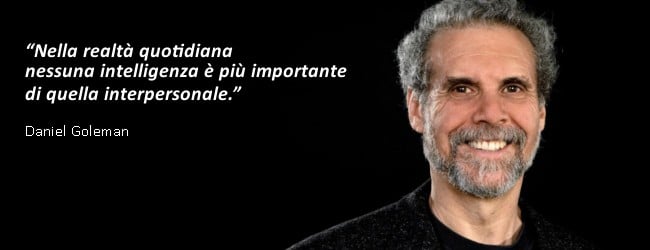
STRAIGHT TO THE EMOTIONS
28 April 2015
EMPOWERMENT: growth towards success
25 May 2015Leadership styles according to Daniel Goleman

Daniel Goleman, American writer, psychologist and journalist, author of the 1995 best-seller ‘Emotional Intelligence’, defines leadership as
“…the ability to influence people, and help them work better to achieve an end goal in common.”
According to the author, there are 6 main leadership styles:
– the Visionary Leader: shares the Mission and Vision, the Ultimate Goal, with employees and creates a particularly positive climate in the company. This style helps and spurs the team when the company goes through a moment of change.
– the Leader coach: creates a connection between the corporate Mission and the needs and values of the individual employee. This style enhances staff and reinforces excellent performance, in terms of quantity and quality of behaviour.
– the democratic leader: values each employee, seeks their support or advice before making decisions, and creates a participative environment that empowers and values each individual team member. This style is beneficial to the working climate, increases productivity, and allows the leader to obtain good feedback. “Wise mentor”.
– the social or affiliative Leader: his goal is to create harmony in the team and in relationships. The relationship is at the centre. This approach is helpful in creating a cohesive and compact team.
– the Outrider Leader: he/she is a forerunner, the one who pulls the group along and is goal-focused. The leader can be seen as ‘unreachable’, overly determined and lacking empathy. If this approach is extreme in the leader, it incites anxiety in the employees. This style is great when entering new markets, but if constant, it undermines the essence of team working.
– the Authoritarian Leader: is a person who prefers to be respected than to be admired by the staff. Imposes the Vision, explicitly or implicitly, creates sensitive asymmetries in relationships, does not accept replies. Motivates staff in a coercive manner (“I will not accept failure, otherwise…”), creates a tense corporate climate in which individuals are unlikely to take responsibility, for fear of disappointing the leader. The leader is followed to avoid possible punishment. As long as he/she is present (in the room, in the company), the team carries out every rule imposed by her/him, but in his/her absence this is not guaranteed, and indeed is a source of strong criticism: the excessive use of rigid rules, achieves the opposite effect, and creates in the team an ill-concealed ‘desire for escapism and transgression’. This style is only recommended in cases of emergency and financial crisis.
WHICH STYLE APPLIES THE EFFECTIVE ‘LEADER’
A good leader must be able to adopt each of these styles, and apply them elastically, never rigidly and unimodally, trying to limit, in terms of time and use, the “outrider” and “authoritarian” styles to the management of “lassiz faire” (i.e. postponing commitments and responsibilities) collaborators, because otherwise they are really not very effective: the effective Leader is characterised by Emotional Intelligence, whereby he or she knows how to understand and manage emotions, both in oneself and in others, and knows how to approach others with the right amount of empathy and seriousness.
A good Leader is one who is followed by the team, in a spontaneous, harmonious, sincere manner.
____________________
- .
- Goleman, D. (2000). Leadership that gets results. Harvard business review,78(2), 78-93.
- Goleman, D., Boyatzis, R., & McKee, A. (2013). Primal Leadership, With a New Preface by the Authors: Unleashing the Power of Emotional Intelligence. Harvard Business Press.
.
.
.


